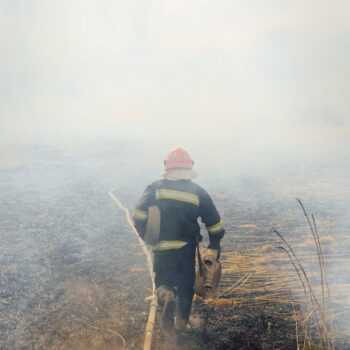Two of the key issues to resolve at COP26 are Adaptation and Loss and Damage. Extreme impacts are already hitting countries earlier and harder than expected, and these will increase significantly in years to come, even if current mitigation targets are met.
Whichever metric is used, costs are already substantial, in both economic and human terms, and will only escalate. In 2020 over 30 million people were displaced by weather-related disasters, primarily in Asia, Africa and Central America. Climate-related disasters cost the world $210 billion in 2020 and 85 percent of the global population has been affected by climate-driven extreme weather events. The economic cost of loss and damage in developing countries is estimated to be $290-580 billion by 2030, rising to between $1-1.8 trillion by 2050.
Climate change already poses a risk to sovereign credit ratings, especially in Least Developed Countries (LDCs) and Small Island Developing States (SIDS). While no country is fully prepared or immune, the impacts are worst for those countries least responsible for climate change and least able to pay for the response. For example, since 2019 multiple cyclones in Mozambique have helped push government debt to 125 percent of GDP. Without appropriate action climate impacts will undermine their ability to adapt to climate change and to achieve sustainable development.
The underinvestment in, and lack of resilience of, societies is widening the divisions between those most and least capable of dealing with these climate, resource and other shocks. While many LDCs shave shown great ingenuity in their responses, recent extreme weather events combined with Covid-19 have overwhelmed disaster response capabilities and state and local budgets. The strain on vulnerable countries is destroying the economic markets of the future and threatens global stability, peace, and prosperity.
Adaptation, Loss and Damage – on a level playing field?
While the Paris Agreement put adaptation and mitigation on a level playing field, this has not happened in practice. Only a quarter of climate finance goes towards adaptation and not enough of that is reaching LDCs and SIDs. While some donor countries have put more money for adaptation on the table in the run up to Glasgow and others have called for a balance between mitigation and adaptation finance, the current response and level of resources does not match the need and level of risk.
LDCs and SIDS have made it clear that they expect significant progress on both adaptation and Loss and Damage at COP26. But it won’t be a success without a credible package of finance, technical assistance, and new frameworks to address adaptation needs and loss and damage.
Because the science is clear and the impacts have already arrived, the politics of climate risk has shifted. Donor countries have shown up in Glasgow with greater willingness to engage on these issues, and to find practical solutions that can be applied now.
There is an urgent need for developed countries to show leadership and offer concrete support to address adaptation and loss and damage as a priority at COP. As the OECD says in its recent report on loss and damage: “Developed countries must scale up both financial and technical support to developing countries and make such support more accessible and predictable.” Encouragingly, the Scottish government has announced £1m for a Climate Justice Resilience Fund to “address loss and damage”.
In this new context, old negotiating lines will no longer hold and using them will be costly. Developed countries must focus on how they can provide vulnerable countries the support they need to address climate impacts practically and urgently. Glasgow is a chance to set a new positive agenda for international cooperation that yields significant geopolitical benefits. Helping vulnerable countries prepare for and manage climate risk is not only a moral imperative, it is also imperative for ensuring global stability.
So what should be delivered in Glasgow?
The major economies should demonstrate a new, and public, willingness to support the most climate vulnerable and least responsible countries to address adaptation and Loss and Damage in Glasgow. Important elements of a solidarity package at Glasgow should include:
- Commitment to parity between adaptation finance and mitigation finance AND at least a doubling doubling of adaptation finance.
- Formalize the Global Goal on Adaptation so that it is fit for purpose in building resilient societies.
- Operationalize the Santiago Network on Loss and Damage including the establishment of a secretariat under the UNFCCC.
- Commitment to include Loss and Damage support under the post-2025 climate finance target process.
- COP should note with concern that some vulnerable countries have experienced unprecedented increase in their debt levels due to external economic shocks while the ability of those states to self-insure against exogenous shocks continues to deteriorate. The COP should call upon parties to work with international financial institutions, including the IMF, whilst respecting their decision-making process, to revise eligibility criteria and modalities that prevent access to concessional finance taking into consideration multidimensional vulnerabilities.
- COP should encourage Parties and finance providers to collaborate in the design and establishment of National Solidarity Funds for Loss and Damage, which can be used to channel finance into the different activities needed to cope with climate impacts and to develop financial instruments required to fund the different activities that need to be delivered through national platforms.


